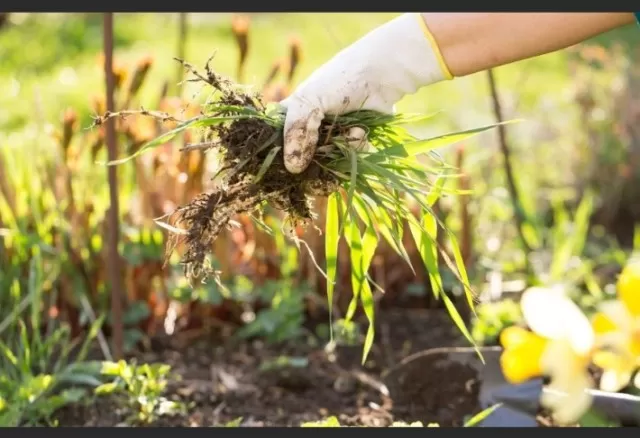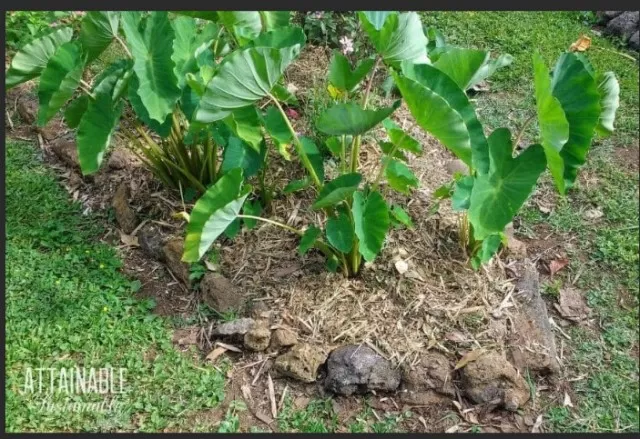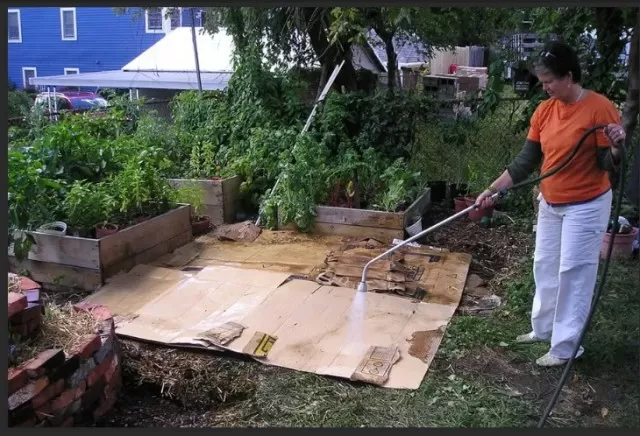Eco-Friendly Weed Control: Natural and Effective Methods. In the intricate choreography of a garden’s dance, weeds often emerge as uninvited guests, disrupting the harmony of carefully nurtured flora. In the pursuit of a weed-free haven, a pivotal choice surfaces: the path of synthetic herbicides or the gentle sway of natural alternatives. Allow this discourse to illuminate the art of botanical coexistence, steering you towards the realm of natural weed management.
Resist the temptation to reach for chemical herbicides; instead, embark on a journey that taps into the inherent wisdom of nature. Discover the myriad solutions that can be harnessed to ward off weeds, each with its own unique method of intervention. From sprays that harness the power of essential oils to smothering techniques that utilize organic matter, the spectrum of possibilities offers a tapestry of choices for vanquishing unwanted growth.
Embrace the essence of a natural weed killer as a dialogue with the environment rather than an imposition upon it. Through these eco-friendly interventions, you tread lightly upon the earth, nurturing a sustainable equilibrium that nurtures both your garden’s aesthetic and the intricate web of life beneath the surface.
Manual Weed Removal: A Traditional and Effective Approach

Embracing a time-honored technique, manual weed removal remains a reliable method for eradicating unwanted plants from your garden.
By personally engaging in the act of pulling weeds by hand, you exhibit a level of vigilance that can lead to a flourishing and weed-free Garden Bed. A Key component of this process is the utilization of a dedicated pair of gardening gloves, a simple yet essential tool in your arsenal.
These gloves serve not only to shield your hands but also to prevent the inadvertent transfer of weed seeds to undesired areas, curbing the potential for future weed growth.
Enhancing your manual weed removal endeavor, consider employing specialized gardening tools like claws or sharp trowels.
These implements aid in the careful loosening of weed roots from the soil, providing you with a firm grip for successful extraction. Remember, the crux of this technique lies in the complete removal of the weed, root and all.
By exerting the effort to entirely uproot the weed, you effectively thwart its chances of resurgence.
In a world brimming with modern alternatives, the simplicity and efficacy of pulling weeds by hand endures as a testament to the enduring wisdom of age-old gardening practices.
As you embark on this botanical battle, you not only nurture your garden but also foster a deeper connection with the earth, one tug at a time.
Utilize Corn Gluten Meal: A Seed Control Strategy
Employing corn gluten meal in your gardening regimen is akin to administering birth control to seeds – an innovative and natural approach to curbing weed proliferation.
This versatile substance can be strategically spread across open sections of your garden, acting as a deterrent for weed seeds seeking to sprout and establish themselves as plants. A remarkable feature of corn gluten meal is its ability to hinder not only weed seed germination but also the growth of other seeds. Consequently, it is advisable to exercise caution when considering its application in your vegetable garden. Opt for this method only after your vegetable plants have taken root and seeds have been sown, ensuring minimal interference with their growth.
Corn gluten meal stands as a testament to the balance between nature’s marvels and your gardening aspirations.
By harnessing its potential, you manifest an astute awareness of your garden’s intricate ecosystem, all while safeguarding its integrity from invasive weed incursions. However, remember that moderation and timing are key – a proactive approach to using corn gluten meal can pave the way for a thriving garden, where both desirable plants and your gardening ambitions flourish hand in hand.
Harness the Power of Mulching: A Multi-faceted Weed Defense

Unleash the potential of mulching as a comprehensive strategy to thwart weed intrusion into your planting areas.
By generously layering a few inches of mulch over the soil, you create an effective barrier that intercepts weed seeds before they even make contact with the earth. This proactive approach is a game-changer, preventing the seeds from embedding themselves in the soil and germinating.
Notably, the benefits of mulch extend beyond weed control, encompassing an array of advantages for your garden.
The role of mulch extends to obstructing sunlight from reaching seeds that have already taken root beneath the soil surface.
In doing so, it eliminates the possibility of these latent seeds sprouting, further enhancing your garden’s resilience against unwelcome growth. The advantages of this method are not confined solely to weed prevention; the organic nature of certain mulches ensures a holistic enrichment of the soil below.
As the mulch breaks down over time, it contributes vital nutrients to the soil, fostering an environment conducive to plant health and vibrancy.
A delightful bonus lies in the aesthetic transformation that accompanies a fresh layer of mulch.
Not only does it serve as a functional barrier against weeds, but it also elevates your garden’s visual appeal. As your landscape is adorned with this protective and visually pleasing layer, your curb appeal receives a boost, effortlessly harmonizing the practical with the picturesque.
Incorporating mulch into your gardening routine goes beyond surface-level benefits, showcasing a holistic approach that nurtures both the soil and the senses.
With this technique, you’re not only preserving the integrity of your garden but also cultivating an environment where your plants thrive, unfettered by the shadow of encroaching weeds.
Harnessing Vinegar\’s Weed-Fighting Potential: Precise Application for Effective Control
Leverage the power of household vinegar as a potent weapon in your battle against weeds.
With the flexibility to apply it via a spray bottle, pump sprayer, or brush, vinegar offers a natural and accessible solution. However, exercise caution, as vinegar doesn’t possess the ability to discern between weeds and desired plants. Thus, targeted application is essential to ensure its efficacy while minimizing unintended harm.
To execute this approach efficiently, direct the vinegar exclusively onto the troublesome weeds, avoiding contact with nearby plants.
Opt for early morning application when winds are generally calm, reducing the risk of vinegar drift and inadvertent contamination. Furthermore, selecting a cloudless day for vinegar application is advisable, as this choice guarantees that rain won’t prematurely wash away the vinegar’s weed-suppressing potential.
Household vinegar often yields favorable results in weed control.
However, if you encounter persistent weeds that seem resistant, don’t hesitate to seek guidance from your local extension office or city government. They can offer insights into the use of higher-concentration vinegar and provide valuable advice on its safe application.
Embracing vinegar as a natural herbicidal ally, you embark on a journey to maintain your garden’s integrity.
The precision and mindfulness applied to this method ensure not only effective weed management but also the preservation of your garden’s diverse flora.
Suffocate Weeds with Recycled Cardboard: A Sustainable Garden Bed Preparation

Embark on a sustainable and effective approach to preparing your garden bed for planting by employing the technique of smothering weeds with recycled cardboard.
This method not only curbs the growth of existing weeds but also acts as a preventative measure against the emergence of new ones. By blanketing the soil with cardboard or repurposed newspapers, you create a formidable barrier that obstructs sunlight from reaching weed seeds, effectively stifling their ability to sprout.
Begin by clearing the visible weeds from the intended garden bed.
Ensuring the soil is damp, lay down the recycled paper material, be it cardboard or newspapers. A thorough dampening of this layer further enhances its weed-suppressing potential.
Subsequently, the application of a layer of mulch crowns the process, sealing the protective barrier and completing the setup.
For optimal results, maintain this opaque cover for a span of 4 to 5 weeks at a stretch.
During this period, the lack of sunlight hampers the germination of weed seeds. Afterward, allow the garden bed to breathe for 1 or 2 weeks before repeating the smothering process.
Employing this cycle enhances the efficacy of the method and maximizes its success rate.
It’s noteworthy that this smothering technique is also adaptable to plastic tarps, providing a reusable alternative.
What sets this approach apart is the eventual breakdown of cardboard and newspapers, integrating them into the soil as they decompose. This process enriches the soil, fostering an environment conducive to earthworm activity and overall soil health.
Incorporating recycled materials into your gardening practices aligns with sustainability principles, allowing you to nurture your garden while minimizing environmental impact.
By embracing this method, you’re not only creating a welcoming haven for your plants but also contributing to the broader ecosystem in a positive and meaningful manner.
*The information is for reference only.